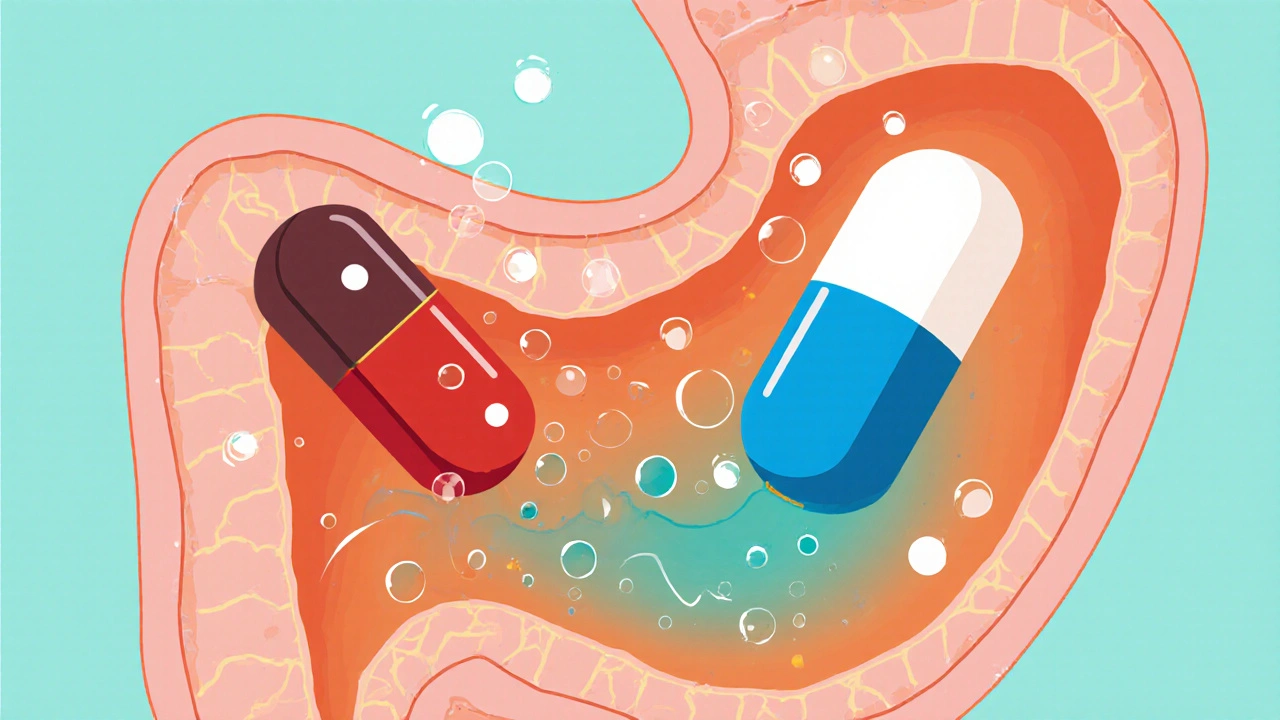When dealing with PPIs, short for proton pump inhibitors, you’re looking at a class of drugs that block the final step of gastric acid production in the stomach lining. Also known as acid suppressants, they are commonly prescribed for conditions like GERD, gastro‑esophageal reflux disease, a chronic acid‑reflux problem that damages the esophagus. and acid reflux, the uncomfortable back‑flow of stomach acid into the throat. While H2 blockers, another class of acid‑reducing meds, act earlier in the acid‑secretion pathway, PPIs target the proton pump itself, delivering a more complete and longer‑lasting reduction in acid. In short, PPIs encompass powerful acid suppression, require careful timing with meals, and often become a long‑term therapy for many patients.
Doctors turn to PPIs when they need a reliable way to lower stomach acid for several reasons. First, severe or persistent acid reflux can lead to esophageal ulcers, Barrett’s esophagus, or even increase cancer risk; PPIs help heal these injuries by giving the lining a break from acid exposure. Second, many patients on non‑steroidal anti‑inflammatory drugs (NSAIDs) develop stomach ulcers; adding a PPI can dramatically cut that risk. Third, conditions such as Zollinger‑Ellison syndrome, where tumors cause excess acid production, are almost always managed with high‑dose PPIs. The key attributes of PPIs include a delayed onset (they need about an hour to work), a long half‑life that keeps acid low for up to 24 hours, and a dose‑dependent effect that can be fine‑tuned. However, the benefits have to be weighed against potential downsides: long‑term use has been linked to nutrient malabsorption (especially magnesium and B12), increased infection risk (like C. diff), and possible kidney issues. In practice, clinicians often start patients on the lowest effective dose, reassess after a few months, and consider stepping down to an H2 blocker or an antacid if symptoms improve.
The collection below pulls together articles that touch on the broader landscape of medication choices, safety tips, and comparative reviews. You’ll find deep dives into drug‑withdrawal strategies, side‑effect profiles, and cost‑effective alternatives that complement or contrast with PPIs. Whether you’re a patient trying to understand why your doctor prescribed a certain dose, or a caregiver looking for ways to manage long‑term therapy, the resources ahead give practical, evidence‑based insights you can act on right away.

Learn how acid‑reducing meds like PPIs and H2 blockers change stomach pH, affect drug absorption, and what clinicians can do to avoid therapeutic failures.
read more